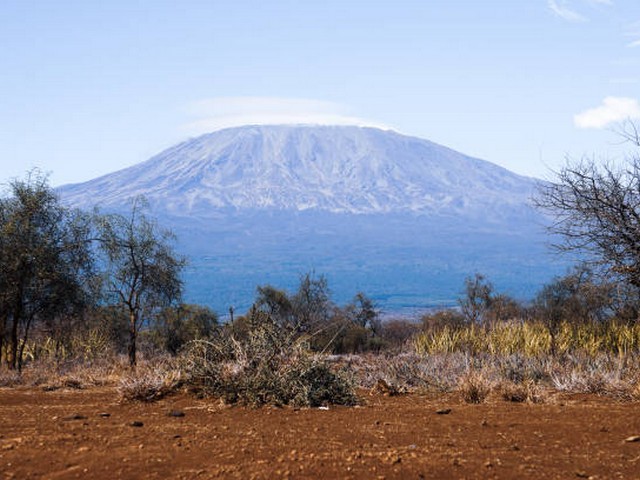Educational Tours On Kilimanjaro’s History: A Journey Through Time
Introduction: Why Kilimanjaro’s History Matters
Mount Kilimanjaro, the roof of Africa, rises majestically above the clouds, crowned with an enigmatic cap of snow. This iconic mountain is not only a geological wonder but also a tapestry woven with rich historical threads, cultural significance, and ecological diversity. At Kilimanjaro Centre for Trekking and Ecotourism (KCTE), we believe that understanding the history of this magnificent mountain can transform a regular climbing expedition into a profound educational journey. In this blog, we will explore the multifaceted historical dimensions of Kilimanjaro that make it a perfect classroom in the sky.
The Ancient Roots of Kilimanjaro
The Geological Birth of a Giant
Kilimanjaro is not just a mountain; it’s a monumental geo-phenomenon. Formed over a million years ago through the tumultuous actions of volcanic activity, Kilimanjaro comprises three volcanic cones: Kibo, Mawenzi, and Shira. The largest, Kibo, is dormant and could erupt again, adding a thrilling layer of mystery to its towering presence. Educational tours here delve into the volcanic processes that shaped not only Kilimanjaro but also the surrounding landscapes, offering a practical lesson in earth science and geology.
Early Human Settlements and Historical Lore
The slopes of Kilimanjaro have been a witness to the ebb and flow of human civilization. Archaeological evidence suggests that the area was populated by hunter-gatherer communities from over 5000 years ago. The mountain has been a silent spectator to the migrations, trade, and wars that have shaped the cultures of the Chagga, Maasai, and other tribal groups in the region. Each trail and cave has a story, each summit whisper tales of yore, making it an enthralling historical tour for those fascinated by human history.
The Colonial Footprints on Kilimanjaro
The Scramble for Kilimanjaro
The late 19th century marked the arrival of European explorers, missionaries, and colonizers in East Africa. Kilimanjaro, known to the locals and revered as a home of gods, was ‘discovered’ by the Western world when Johannes Rebmann, a German missionary, documented his sighting in 1848. This marked the beginning of the mountain’s modern era, which saw Kilimanjaro become a pawn in the geopolitical games of the German and British empires. Our educational tours recount these colonial tales and their impacts on the local communities and the mountain itself.
The Route of the Imperialists
Hiking through Kilimanjaro offers more than just physical exercise; it is a walk through the corridors of colonial history. The routes established during the German and later British rule are laden with stories of conquest, exploitation, and eventual conservation efforts. Understanding this colonial legacy is crucial in appreciating the complex tapestry of Kilimanjaro’s present-day conservation ethos and multicultural camaraderie.
Kilimanjaro in the 20th Century and Beyond
The Path to Conservation
The declaration of Kilimanjaro as a National Park in 1973 marked a significant turn in its historical journey, emphasizing conservation and sustainable tourism. This move was instrumental in preserving its unique biodiversity and the cultural heritage of the indigenous communities. Educational tours on Kilimanjaro illuminate the challenges and triumphs of conservation efforts, offering lessons in environmental science and eco-responsibility.
Kilimanjaro Today: A Global Icon
Today, Kilimanjaro is more than just a mountain; it’s a symbol of adventure, endurance, and natural beauty. It attracts climbers and scholars from around the world, each coming to conquer its heights and learn from its vast natural library. Kilimanjaro’s role in promoting understanding between cultures, fostering global connectivity, and inspiring ecological mindfulness is unparalleled.
Why Book Your Educational Tour with KCTE?
At Kilimanjaro Centre for Trekking and Ecotourism (KCTE), we are not just about climbing; we are about learning. Our guided tours are designed to educate as they exhilarate, ensuring that every step you take on the mountain is a step towards greater knowledge and appreciation of this magnificent monument of nature. Led by expert guides with deep historical knowledge and commitment to ecological preservation, our tours promise an enriching experience that goes beyond the physical climb.
Summary and Call to Action
Embarking on an educational tour of Kilimanjaro’s history with KCTE is more than just a trek; it’s an immersive educational experience that offers deep insights into the natural, cultural, and historical landscapes of this majestic mountain. Whether you are a history buff, a geology enthusiast, or a teacher looking to give your students a unique learning experience, Kilimanjaro awaits with its stories and lessons.
Join us at Kilimanjaro Centre for Trekking and Ecotourism (KCTE) and transform your understanding of this African giant. Book your climb and become part of Kilimanjaro’s ongoing history. Visit our website or contact us today to plan your educational adventure on the slopes of Kilimanjaro!
FAQs About Educational Tours on Kilimanjaro
Q: What is the best time to visit Kilimanjaro for an educational tour?
A: The best times are during the dry seasons, from June to October and from December to March when the weather is most favorable for trekking and learning.
Q: Are there special packages for educational groups?
A: Yes, at KCTE, we offer customized packages for educational groups, including schools, universities, and history or science clubs, providing a tailored learning experience.
Q: What should I bring for an educational tour on Kilimanjaro?
A: Apart from the usual trekking gear, bring a good notebook, a camera, and an open mind ready to absorb the rich knowledge imparted during the tour.
Q: How physically demanding are these tours?
A: While Kilimanjaro is a physically challenging climb, our educational tours are paced to accommodate learners, with ample rest and discussion times scheduled into the itinerary.
Explore the heights and depths of Kilimanjaro’s history with KCTE, where every step tells a story.




